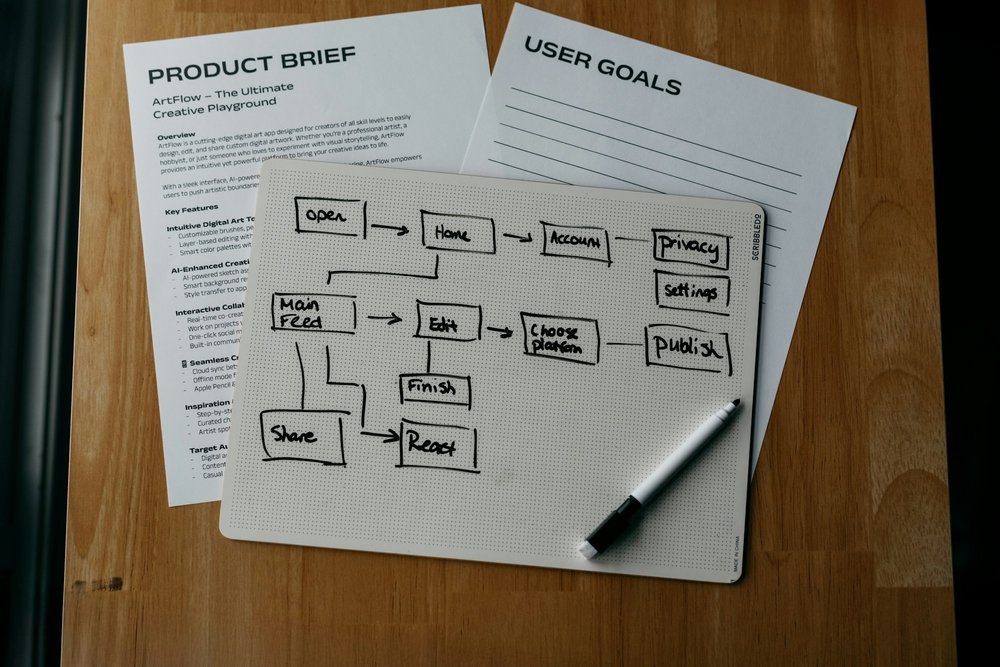A video production request for proposal (RFP) is a crucial document that outlines your video project and invites video production companies or agencies to submit bids. It serves as a roadmap for vendors to understand your goals, style, timeline, and budget, helping you select the right partner for your project.
This article will guide you through the process of creating an effective video production RFP, ensuring you cover all the necessary details to attract the best vendors.
In this guide, we will break down the essential components of a successful video production RFP and provide a customizable template to help you streamline your selection process and get the best proposals.
Why Use a Video Production RFP?

When sourcing video production services, especially for significant projects, an RFP helps you:
- Gather detailed proposals from qualified vendors without spending excessive time searching.
- Standardize evaluation criteria so all submissions can be fairly compared.
- Ensure clarity on your video project objectives, expectations, and deliverables, and how these align with your overall business goals.
- Facilitate collaboration across your internal teams by consolidating all project details in one document.
With over 4,900 video production companies in the US alone, according to IBISWorld, using an RFP can save time and improve your chances of finding the right fit.
Key Elements of a Winning Video Production RFP

Although every project is unique, a strong RFP typically contains these four critical sections. It's essential to include all critical information in your RFP to ensure vendors have a clear understanding of your needs.
1. Company Overview
Make a strong first impression by introducing your company, its business objectives, and its mission. Describe the market your business operates in, your expertise, and your experience working with other clients. This helps vendors understand your values and whether they align with your brand.
Include:
- Company mission and vision to showcase your core values and how they support your overall business goals.
- Product or service overview to explain what you offer and how it addresses needs in your target market.
- Company history and size to provide context, including notable achievements with other clients.
- Leadership team to highlight who’s behind the brand.
- Market focus and notable other clients to demonstrate your experience in the industry and credibility with similar businesses.
This section sets the tone for the proposal and helps vendors tailor their responses.
2. Video Project Details

This is the heart of your RFP, where you clearly define what you want to achieve and how. Clearly outlining the project scope and deliverables is essential to ensure vendors can deliver the desired results. Be sure to describe the process of creating the video, from initial concept through to the final product.
Include:
- Project overview: A brief description of the video project.
- Scope: Define the detailed extent of work, including all deliverables, boundaries, and specific requirements for the project.
- Video objectives: What is the purpose? (e.g., brand awareness, recruitment, explainer).
- Video type and style: Live-action, animation, product demo, explainer videos, documentaries, etc.
- Target audience: Who will watch this video?
- Creative brief: Brand guidelines, tone, and style preferences.
- Deliverables: Final video length, formats, versions, and any specific features like voiceovers, audio production, multilingual dubbing, or subtitles.
- Distribution plan: Where and how will the video be published? (e.g., social media, website, TV).
- Timeline: Key milestones and final delivery date.
- Assets provided: Scripts, brand assets, storyboards, or any materials you will supply.
Being thorough here ensures vendors understand your expectations and can plan accordingly.
3. Proposal Submission Requirements
Guide potential contractors on the information you need to evaluate their fit and ensure a good fit for your video production project. We are seeking a qualified contractor who can handle the entire production process. Proposals will be evaluated based on clear selection criteria to ensure alignment with our requirements and values.
Request:
- Company background: Present an overview of your expertise and services clearly and effectively.
- Team structure: Present who will work on your project.
- Relevant experience: Present examples of similar projects or case studies.
- Client testimonials and references: Present information to verify quality and reliability.
- Project timeline: Present when you can start and estimated delivery dates.
- Pricing: Provide a detailed price breakdown including pre-production, filming, post production, and any additional fees.
This section helps you compare proposals on equal footing and identify the right partner who is a good fit for your needs.
4. Contact and Submission Details

Clarify the process for submitting proposals and who to contact with questions.
Include:
- Submission deadline to keep the process on track.
- Contact person and information for communications.
- Preferred submission method: Email or online portal (noting that 43% of RFPs are submitted via portals).
Sample Video Production RFP Template
This template provides a clear format for creating a comprehensive RFP for your next video project. Using this format can support your team by clarifying project requirements and guiding you through each essential section, making the RFP process more effective and reducing confusion.
About Your Company
- Background:
- Mission:
- Product/Service Overview:
- Team:
Video Project Overview
- Project summary:
- Objectives:
- Video type and style:
- Target audience:
- Creative brief:
- Deliverables:
- Video specs:
- Distribution plan:
- Timeline:
- Assets provided:
Proposal Submission
- Company overview:
- Team structure:
- Relevant projects:
- Testimonials:
- References:
- Timeline:
- Pricing:
Submission Instructions
- Deadline:
- Contact name:
- Contact email:
- Submission method:
Tips for Crafting an Effective Video Production RFP

- Be clear but flexible: Provide enough detail to guide vendors but allow room for creative input.
- Use examples: Share an example of reference videos or styles you like to help vendors visualize your vision and clarify your expectations.
- Focus on writing a clear RFP: When writing your RFP, ensure it is detailed and tailored to your project needs. Clear writing helps communicate your requirements effectively to potential video production partners.
- Manage the proposal process: Set clear timelines for submissions, communicate expectations, and review all proposals carefully to select the most suitable vendor.
- Set realistic timelines: Avoid rush deadlines that may limit quality or vendor interest.
- Be transparent about budget: Sharing a budget range helps vendors propose feasible solutions.
- Review case studies: Look at vendors’ previous work to ensure their style matches your needs.
Final Thoughts
A well-constructed video production RFP not only saves time but also leads to better proposals and ultimately a better video. By clearly communicating your goals, expectations, and project details, you invite the right video production companies to partner with you and bring your story to life. With a well-crafted RFP, your story has the potential to reach the world through effective video campaigns.
For more insights on video production and examples of successful projects, explore Levitate Media’s case studies and video styles overview.
Frequently Asked Questions (FAQs)
How detailed should my video creative brief be in the RFP?
A: Your creative brief should outline your brand guidelines, tone, style preferences, and any mandatory elements like logos or taglines. Providing reference videos can also help vendors understand your vision.
Can I use the same RFP template for both animation and live-action projects?
A: While the core structure remains similar, animation and live-action projects have different needs—such as casting and locations for live-action vs. storyboarding and design for animation. Tailor your RFP accordingly. Learn more about 2D vs. 3D animation services.
What are typical costs included in a video production proposal?
A: Costs usually cover pre-production (planning, scripting), filming or animation, post production (editing, color grading, sound), talent fees, equipment, and revisions. Asking vendors for a detailed cost breakdown helps avoid surprises. See Levitate’s video production pricing guide for benchmarks.
How can I ensure I choose the right video production agency?
A: Evaluate proposals based on relevant experience, creative approach, communication, and alignment with your goals. Reviewing client testimonials and case studies is essential. Levitate’s how to choose a video production company guide offers practical advice.
How do I write a video production RFP?
A: To write a video production RFP, clearly outline your project objectives, target audience, budget, timeline, and any technical requirements. Be specific about deliverables and evaluation criteria to help agencies submit relevant proposals.









